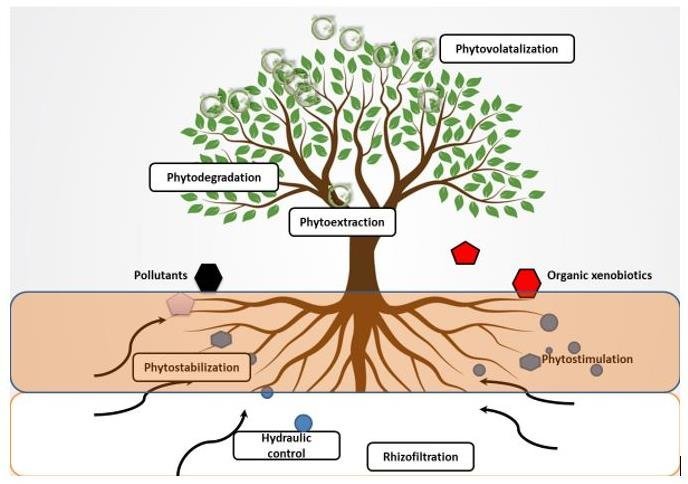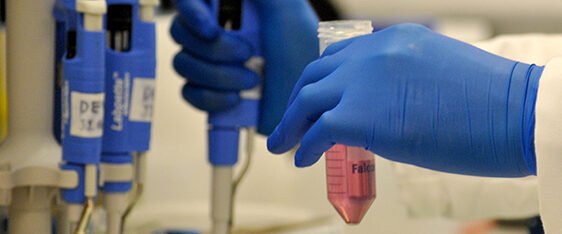Imagine a future where the very plants lining our streets, parks, and rooftops aren’t just decorations but powerful agents actively purifying the air. In this vision, every leaf, root, and stem plays a vital role in absorbing pollutants, filtering toxins, and producing clean oxygen, turning our cities into sprawling natural air purifiers.
This isn’t science fiction—it’s the promise of genetically enhanced phytoremediation. Through careful genetic selection and modification, scientists are equipping plants with specialized traits to supercharge their natural ability to cleanse the environment. As urban air quality continues to decline due to pollution, these engineered plants offer a revolutionary solution. With the potential to transform how we manage urban pollution, genetically enhanced phytoremediation could change city landscapes from grey to green, offering us not only cleaner air but also a renewed connection to nature’s innate power to heal.
The Basics of Phytoremediation
Phytoremediation involves harnessing plants to remove pollutants from soil, air, or water. Plants capable of this have evolved specific traits that allow them to uptake and process contaminants. Examples include fast-growing species with extensive root systems, which can absorb heavy metals, and leafy plants with large surface areas that capture airborne pollutants like volatile organic compounds (VOCs) and particulate matter (PM). However, the effectiveness of phytoremediation in urban spaces can be amplified by selecting and enhancing plants with traits that are optimized for these functions.
Key Genetic Traits for Enhanced Phytoremediation
Through genetic research and selective breeding, scientists are identifying and amplifying traits in plants that improve their phytoremediation capabilities. Here are some genetic traits that show promise in enhancing air quality:
- Enhanced VOC Absorption: Some plants naturally absorb and break down VOCs through their leaf pores (stomata). Genetic modifications aimed at increasing stomatal density or opening duration can improve the plant’s ability to take in VOCs like benzene and formaldehyde, common pollutants in urban environments.
- Larger Leaf Surface Area: Certain genes control the size and density of leaves, which directly impacts a plant’s ability to trap airborne particles. By enhancing these genes, researchers can develop plants with broader, denser foliage that can capture more particulate matter, reducing PM levels in urban air.
- Accelerated Growth and Biomass Production: Fast-growing plants with high biomass production have greater capacities for pollutant uptake. Genetic modifications that promote rapid growth rates or increased biomass allow plants to absorb contaminants more effectively, while also providing more green cover in a shorter time—a vital feature for heavily polluted urban areas.
- Resistance to Pollutants: Some plants naturally tolerate higher levels of pollutants like sulfur dioxide or nitrogen oxides, which are common in cities. Enhancing these tolerance genes in other plants can create species that not only survive but thrive in polluted environments, continually improving air quality over time.
- Heavy Metal Accumulation and Detoxification: Urban soils often contain heavy metals like lead and cadmium due to vehicle emissions, construction, and industrial activities. Hyperaccumulator plants—those that naturally absorb large amounts of heavy metals—can be genetically enhanced to improve their detoxification pathways, allowing them to store these metals safely without compromising plant health.
Phytoremediation as an Urban Solution
The potential of genetically enhanced phytoremediation in cities lies in its adaptability and sustainability. Urban planners and environmental scientists envision creating “green walls” or strategically placed phytoremediation zones in high-traffic or high-pollution areas. Living walls or rooftop gardens, populated with genetically optimized phytoremediation plants, could actively absorb VOCs, PM, and other pollutants while also providing green space for urban residents.
The use of phytoremediation as an urban solution offers several advantages:
- Cost-Effectiveness: Unlike some mechanical or chemical filtration systems, phytoremediation is relatively low-cost and requires minimal maintenance once established.
- Aesthetic and Recreational Value: Urban green spaces have proven benefits for mental health, biodiversity, and temperature regulation. Enhanced phytoremediation plants can transform parks and public spaces into clean-air zones, benefiting both people and the environment.
- Sustainable Development: Phytoremediation aligns with sustainability goals by using natural processes to improve air quality, thereby reducing reliance on energy-intensive or waste-producing filtration methods.
Challenges and the Future of Phytoremediation Research
While genetic modification in phytoremediation offers exciting potential, challenges remain. Research must carefully address potential ecological impacts of introducing genetically modified organisms (GMOs) in urban ecosystems, and effective phytoremediation will require plant species suited to the specific pollutants present in each area.
Future research directions include developing non-GMO methods for enhancing phytoremediation traits through selective breeding or gene editing techniques that do not produce transgenic plants. Additionally, scientists are exploring microbiomes that can be paired with phytoremediation plants to increase pollutant uptake further.
Genetically enhanced phytoremediation offers an innovative, eco-friendly approach to urban air quality management. As cities around the world continue to grow, integrating genetically optimized phytoremediation plants into urban landscapes could revolutionize the way we address pollution, offering a sustainable, accessible, and visually appealing solution to one of today’s most pressing environmental issues. With continued research and collaboration between plant biologists, geneticists, and urban planners, we can pave the way for greener, cleaner, and healthier cities worldwide.
References
Phytoremediation Overview: U.S. Environmental Protection Agency (EPA). “Introduction to Phytoremediation.”
Effectiveness of Phytoremediation in Urban Spaces: Ali, H., Khan, E., & Sajad, M. A. (2013). “Phytoremediation of heavy metals—Concepts and applications.” Chemosphere, 91(7), 869–881.
VOC Absorption: Wolverton, B. C. (1997). “How to Grow Fresh Air: 50 House Plants that Purify Your Home or Office.” New York: Penguin Books.
Leaf Surface Area for Particulate Matter Capture: Weerakkody, U., Dover, J. W., Mitchell, P., & Reiling, K. (2018). “Evaluating the impact of individual leaf traits on atmospheric particulate matter accumulation using natural and synthetic leaves.” Urban Forestry & Urban Greening, 30, 98-107.
Accelerated Growth and Biomass: Pilon-Smits, E. (2005). “Phytoremediation.” Annual Review of Plant Biology, 56, 15–39.
Tolerance to Pollutants: Baker, A. J. M., & Brooks, R. R. (1989). “Terrestrial higher plants which hyperaccumulate metallic elements—A review of their distribution, ecology and phytochemistry.” Biorecovery, 1(2), 81-126.
Green Infrastructure in Cities: Kazemi, F., Beecham, S., & Gibbs, J. (2009). “Streetscape biodiversity and the role of green infrastructure in urban environments.” Urban Forestry & Urban Greening, 8(2), 131–139.
Cost-Effectiveness of Phytoremediation: Chaney, R. L., & Malik, M. (2001). “Phytoremediation of Soil Metals.” Current Opinion in Biotechnology, 12(3), 279-284.
Health Benefits of Urban Green Spaces: WHO Regional Office for Europe (2016). “Urban green spaces and health: A review of evidence.” World Health Organization.
Genetic Modification Concerns in Urban Ecosystems: MacIntyre, L., & Campbell, C. (2014). “Considerations for the use of genetically modified plants in urban phytoremediation projects.” Environmental Science & Technology, 48(1), 1-3.
Microbial-Plant Interactions in Phytoremediation: Glick, B. R. (2010). “Using soil bacteria to facilitate phytoremediation.” Biotechnology Advances, 28(3), 367–374.




